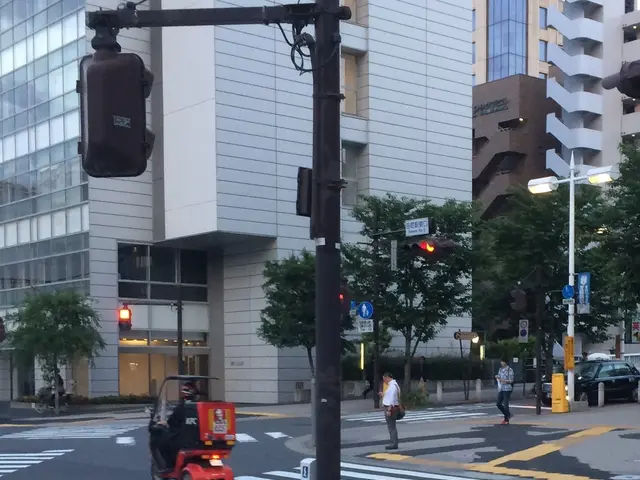Enhance your shadows and highlights: Skillfully edit low-light photographs to magnify the impact of minor light sources
In the realm of digital photo editing, Affinity Photo 2 offers a powerful solution for enhancing low-light images. Here's a step-by-step guide on how to make the most of this software.
Step 1: Opening and Initialising
Start by opening your RAW file in the Development Persona. By default, Affinity sets a Tonal Curve; switch it to "Take no action" to establish a neutral base for your edits.
Step 2: Basic Edits
Next, perform some basic edits to balance light. Increase the Shadow slider to brighten darker areas, decrease the Highlight slider to avoid blowing out highlights, and use the Luminance slider in the Detail panel to reduce noise. Slightly sharpen using the Detail Refinement slider, ensuring you avoid unnatural effects.
Step 3: Midtone Selection
To isolate midtone adjustments, click the Select tool in the headbar and enable "Select Midtones" under Tonal Range.
Step 4: Curve Adjustment Layers
Add Curve Adjustment Layers for targeted tonal control. Create an S-curve to enhance contrast if appropriate, and adjust specific points to deepen shadows and boost midtones for better clarity without oversaturation.
Step 5: Fine-tuning Exposure
Adjust the overall exposure slightly if the image is too dark or bright, maintaining a natural mood and avoiding overediting.
This approach supports non-destructive editing and precise tonal control, ideal for enhancing low-light photos while preserving atmosphere and detail.
Additional Techniques
Change the Blend mode of the Pixel Layer to Overlay. To adjust the exposure of specific image elements, create a new Pixel Layer above the Background Layer and add a Curve Adjustment Layer to it. Use the Brush tool with a soft setting to paint over image elements, choosing White to lighten or Black to darken as needed.
This tutorial covers the use of Curve Adjustment Layers and Detail Refinement & Noise Reduction, and it applies to various low-light scenarios such as candelit portraits, neon-lit street scenes, and ambient twilight photos. The goal of the editing process is to guide the viewer's eye, deepen the atmosphere, and make every pixel count.
Read also:
- The new design chief at General Motors predicts that autonomous vehicles will significantly alter the appearance of cars.
- Game Publishers Aim to Replicate Nintendo Switch 2's $80 Pricing Strategy
- Kalp and Funton.ai Combine Forces to Reinvent Web3 Gaming Industry
- Experiencing a distance of 600 miles in a 2024 Audi Q6 e-tron electric vehicle, I found that cruising beyond 75 MPH highway speeds necessitated more charging breaks, though still manageable with three stops.








